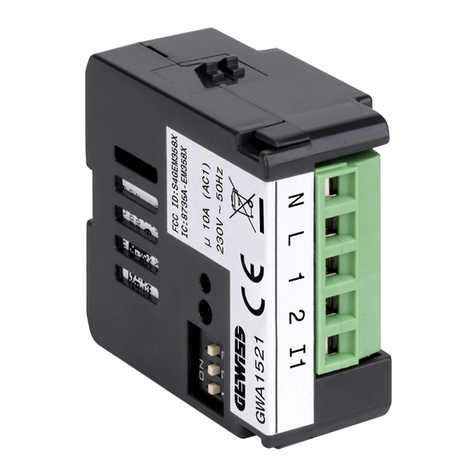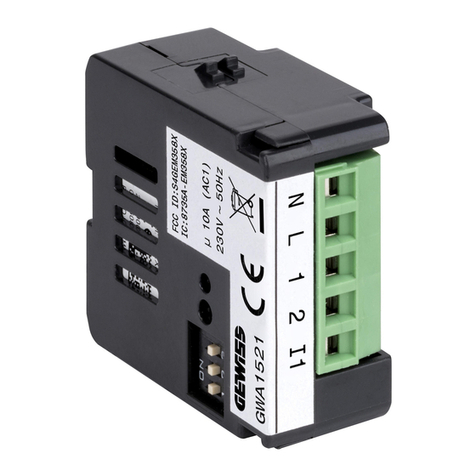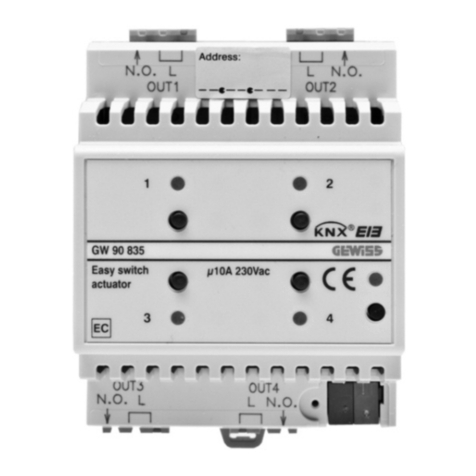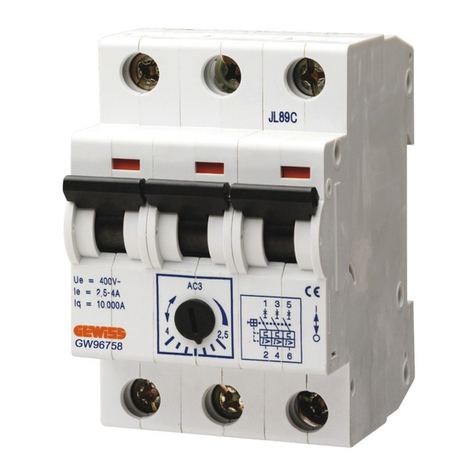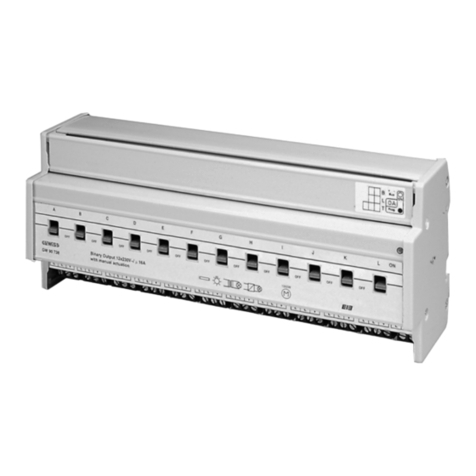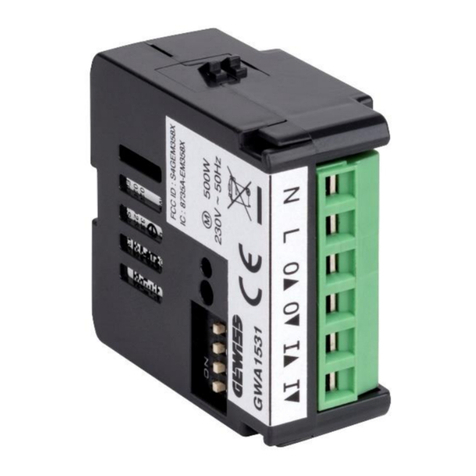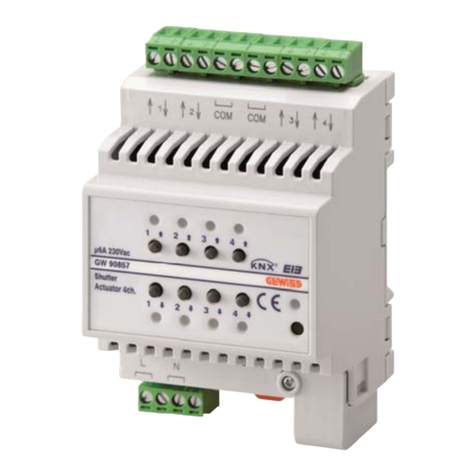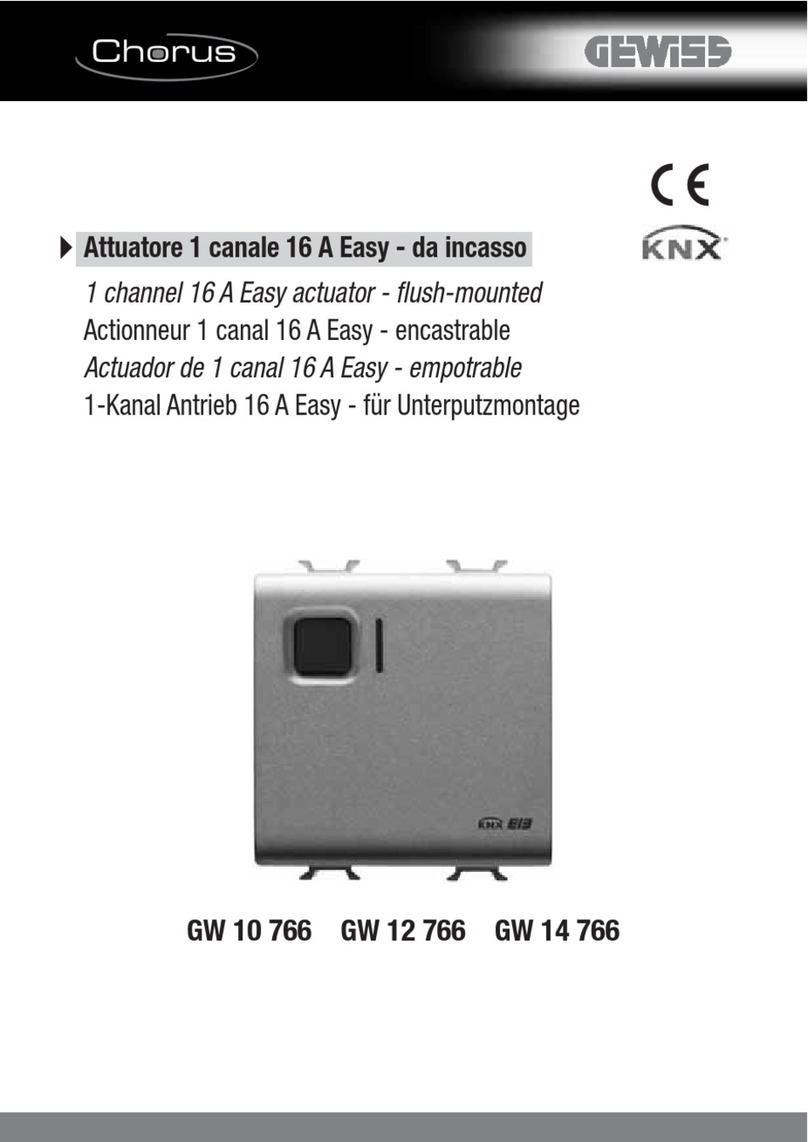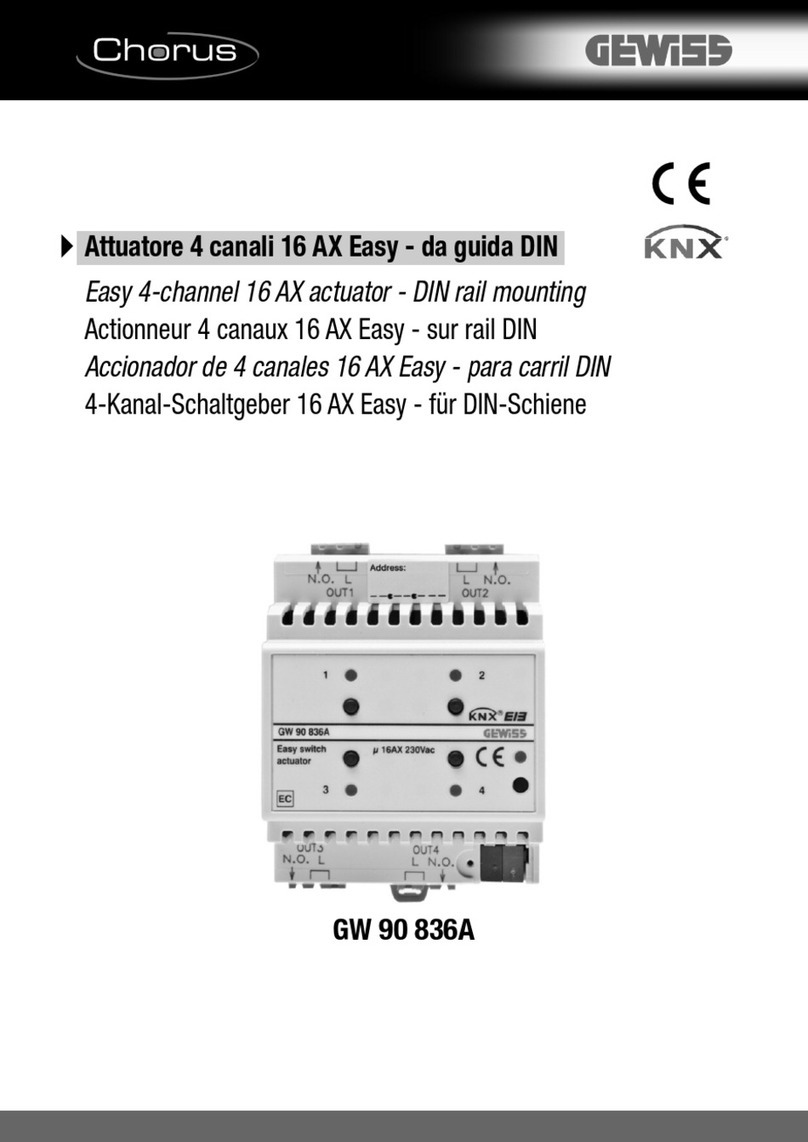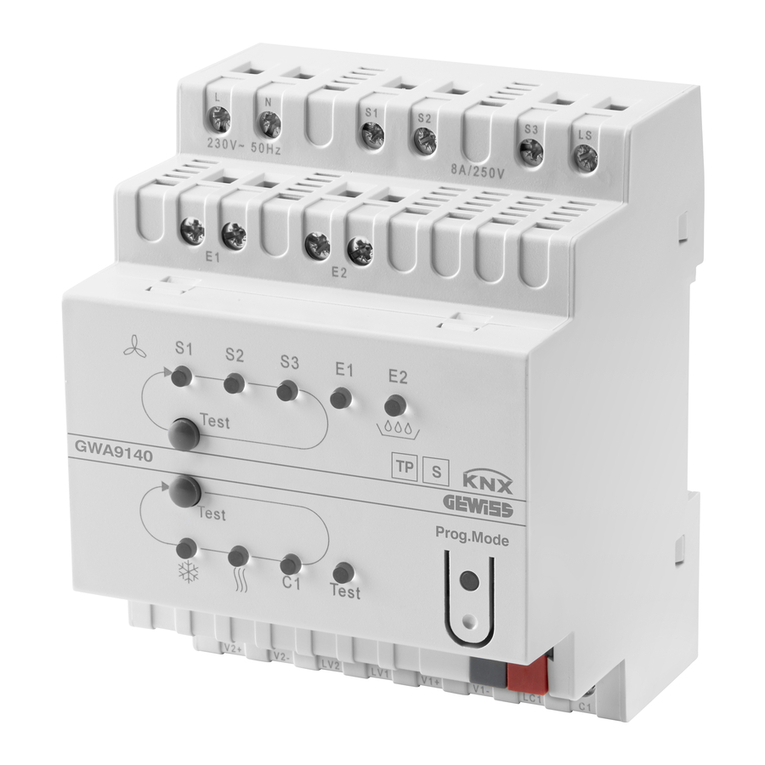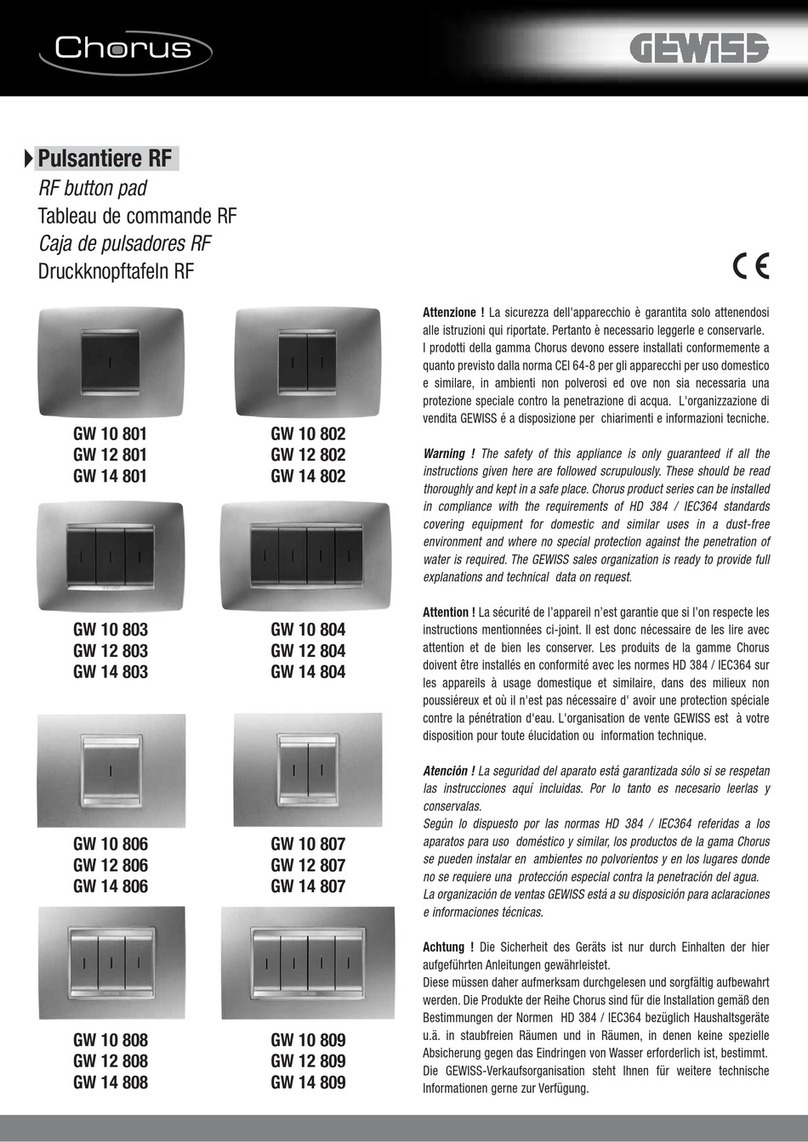Uscita relè 1 -Output relay 1 - Sortie relais 1
-Salida relé 1 - Relaisausgang 1
Uscita relè 2 -Output relay 2 - Sortie relais 2
-Salida relé 2 - Relaisausgang 2
Pulsante attuazione locale relè 1 -Relay 1
local actuator button - Bouton actionnement
local relais 1 - Pulsador actuación local de relé
1 - Taste lokale Betätigung Relais 1
LED stato relè 1 -Relay 1 status LED - LED
état du relais 1 -LED de estado de relé 1 - LED
Status Relais 1
Pulsante attuazione locale relè 2 -Relay 2
local actuator button - Bouton actionnement
local relais 2 - Pulsador actuación local de relé
2 - Taste lokale Betätigung Relais 2
LED stato relè 2 -Relay 2 status LED - LED
état du relais 2 - LED de estado de relé 2 -
LED Status Relais 2
LED stato relè 3
-
Relay 3 status LED - LED
état du relais 3 - LED de estado de relé 3 -
LED Status Relais 3
Pulsante attuazione locale relè 3
-
Relay 3
local actuator button - Bouton actionnement
local relais 3 - Pulsador actuación local de relé
3 - Taste lokale Betätigung Relais 3
LED stato relè 4 -Relay 4 status LED - LED
état du relais 4 - LED de estado de relé 4 -
LED Status Relais 4
Pulsante attuazione locale relè 4 -Relay 4
local actuator button - Bouton actionnement
local relais 4 - Pulsador actuación local de relé
4 - Taste lokale Betätigung Relais 4
LED di programmazione indirizzo fisico -
Physical address programming LED - LED de
programmation adresse physique - LED de
programación de dirección física - LED für
Programmierung physikalische Adresse
Tasto di programmazione indirizzo fisico -
Physical address programming button - Touche
de programmation adresse physique - Tecla de
programación de dirección física - Taste für
Programmierung physikalische Adresse
Uscita relè 3 -Output relay 3 - Sortie
relais 3 - Salida relé 3 - Relaisausgang 3
Uscita relè 4 -Output relay 4 - Sortie
relais 4 - Salida relé 4 - Relaisausgang 4
Terminali bus -Bus terminals - Borniers
bus - Terminales bus - Busanschlüsse
2
1
3
4
5
5
1
6
7
8
3
6
4
7
8
11
2
13 14 15
12
9
10
9
10
11
12
13
14
15
